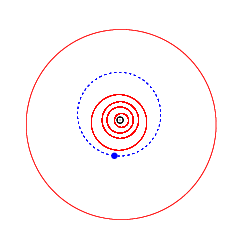9985 Akiko
From Wikipedia, the free encyclopedia
 | |||||||||||||
| Discovery and designation | |||||||||||||
|---|---|---|---|---|---|---|---|---|---|---|---|---|---|
| Discovered by | R. H. McNaught & H. Abe | ||||||||||||
| Discovery date | May 12, 1996 | ||||||||||||
| Designations | |||||||||||||
| Named after | Akiko Yamamoto | ||||||||||||
| Alternative names | 1996 JF, 1982 KC2 | ||||||||||||
| Orbital characteristics | |||||||||||||
| Epoch October 27, 2007 | |||||||||||||
| Aphelion | 2.6290017 AU | ||||||||||||
| Perihelion | 1.9766781 AU | ||||||||||||
| Semi-major axis | 2.3028399 AU | ||||||||||||
| Eccentricity | 0.1416346 | ||||||||||||
| Orbital period | 1276.4213457 d | ||||||||||||
| Mean anomaly | 133.78937° | ||||||||||||
| Inclination | 5.42776° | ||||||||||||
| Longitude of ascending node | 71.13216 | ||||||||||||
| Argument of perihelion | 117.28290° | ||||||||||||
| Physical characteristics | |||||||||||||
| |||||||||||||
| Absolute magnitude (H) | 14.8 | ||||||||||||
|
| |||||||||||||
9985 Akiko is a main belt asteroid. It orbits the Sun once every 3.49 years.[1]
Discovered by R. H. McNaught and H. Abe on May 12, 1996 it was given the provisional designation 1996 JF. It was later renamed 9985 Akiko after Akiko Yamamoto, a longtime collaborator with H. Abe.[2]
References
- ↑ "9985 Akiko (1996 JF)". JPL Small-Body Database Browser.
- ↑ MPC 34632 Minor Planet Center
| |||||
| ||||||||||||||||||||||
This article is issued from Wikipedia. The text is available under the Creative Commons Attribution/Share Alike; additional terms may apply for the media files.